Accepted Scientific Name: Turbinicarpus gielsdorfianus (Werderm.) V.John & Říha
Kaktusy (Brno) 19(1): 22 (1983) cf. Repert. Pl. Succ. (I.O.S.) 34: 8 (1985):. 1983
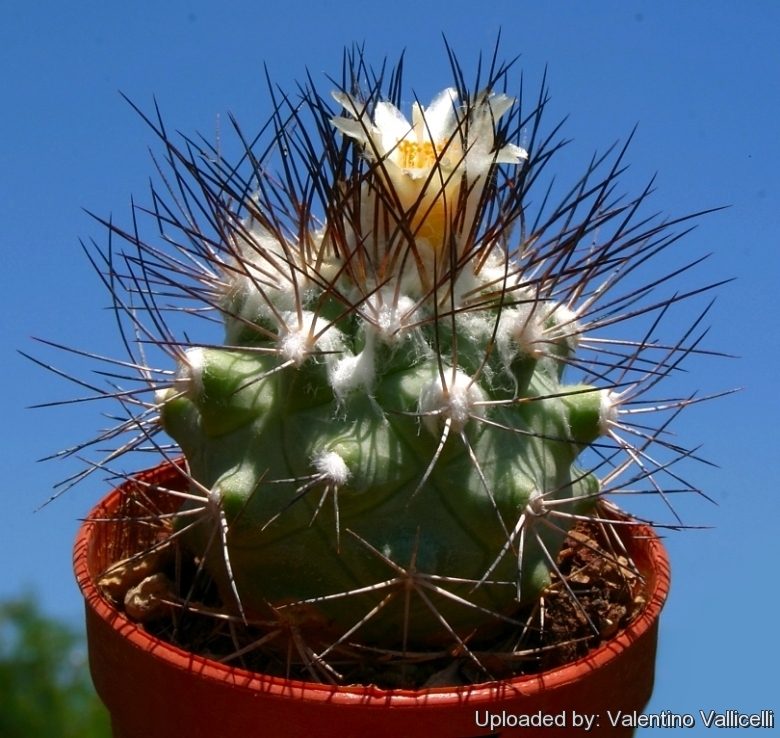
Echinocactus gielsdorfianus (Turbinicarpus gielsdorfianus) Photo by: Valentino Vallicelli
This plant is recognizable without problems for the blue-grey body, dark black spines, areoles with white wool (when young), soon becoming bare and white flowers.
Origin and Habitat: Native to the Valley of Jaumave, (near Cerritos) in the state of San Lois Potosi (Mexico). The Jaumave Valley in Tamaulipas is important for its considerable concentration of endemic species such as Obregonia denegriiSN|2100]]SN|2100]] among others.
Synonyms:
Common Names include:
SPANISH (Español): Biznaga cono invertido de Gielsdorf
Description: Usually solitary occasionally very clustering, globose to slightly cylindrical cactus
Stem: Bluish to greyish to yellow-green, older parts with whitish markings, up to 7 cm tall , 4,5-5 cm in diameter; apex barely sunken, with black spines tips emerging from a dense white woolly coat.
Root: Swollen bundled.
Tubercles: Loosely ordered, angular, conical-pyramidal , younger with steeper lateral surfaces, the older somewhat flattened out, rising from a wide hexagonal base, 3-6 mm long;
Areoles: Elliptical up to 2 mm long, with abundant ephemeral wool, later only with a tuft of wool in the short furrow, soon completely bald and corky.
Radial spines: 6 or 7, up to 2 cm long, awl-shaped, straight or with the tip curved, white in the basal portion and black at the tips, becoming completely whitish as they ages. Old spines dirty dark grey brown and packed together.
Cental spines: Usually absent but sometime 1 of the same colour and size of the radials.
Flower: Creamy-white with darker midribs, from the apical wool, individually or few, funnel-shaped; 18-20 mm long, 20-25 mm in diameter. The perianth tube with a ring-shaped constriction. Perianth tube approx. 5 mm long, expanding above, lower part without scales, pale olive-brownish. Scales only at the end, oblong, approx. 2-8 mm long, merging into the outer perianth segments, pale brownish green with light edge, reddish median, at the end with a somewhat curved, russet coarse hair-like tip, filaments white, anthers chrome yellow. Style white, approx. 12 mm long. Stigma lobes 5-6, overstanding the stamens, approx. 2 mm long, white, spreading, very papillose, almost hairy.
Fruit: Green dehiscing longitudinally.
Seeds: Dull-Black, kidney shaped, 1-1.2 mm long.
Notes: Turbinicarpus gielsdorfianusSN|11691]]SN|12730]] is possibly a transitional taxon between the former members of the genus Gymnocactus and the "true" Turbinicarpus species via the saueri and lophophoroides aggregates.
It is also very likely that this species is one of the parents of the hybrid Turbinicarpus roseiflorusSN|12730]]SN|11691]].
 Echinocactus gielsdorfianus (Turbinicarpus gielsdorfianus) Photo by: Peiffer Clement
Echinocactus gielsdorfianus (Turbinicarpus gielsdorfianus) Photo by: Peiffer Clement Long spined form. (Turbinicarpus gielsdorfianus) Photo by: Cactus Art
Long spined form. (Turbinicarpus gielsdorfianus) Photo by: Cactus Art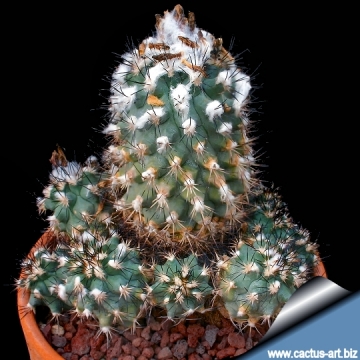 Echinocactus gielsdorfianus (Turbinicarpus gielsdorfianus) Photo by: Cactus Art
Echinocactus gielsdorfianus (Turbinicarpus gielsdorfianus) Photo by: Cactus Art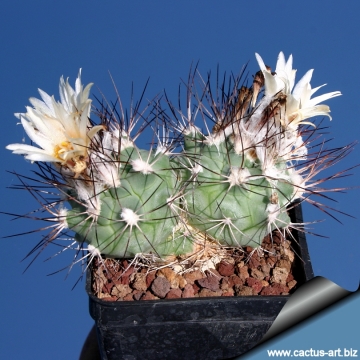 Echinocactus gielsdorfianus (Turbinicarpus gielsdorfianus) Photo by: Cactus Art
Echinocactus gielsdorfianus (Turbinicarpus gielsdorfianus) Photo by: Cactus Art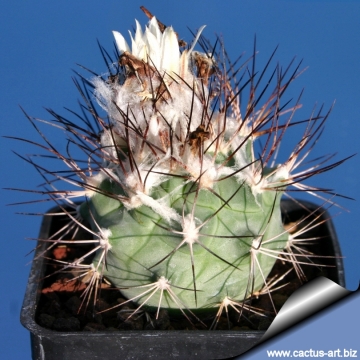 Echinocactus gielsdorfianus (Turbinicarpus gielsdorfianus) Photo by: Cactus Art
Echinocactus gielsdorfianus (Turbinicarpus gielsdorfianus) Photo by: Cactus Art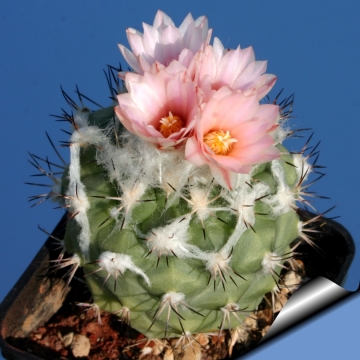 Short spined form (Turbinicarpus gielsdorfianus) Photo by: Cactus Art
Short spined form (Turbinicarpus gielsdorfianus) Photo by: Cactus Art

















